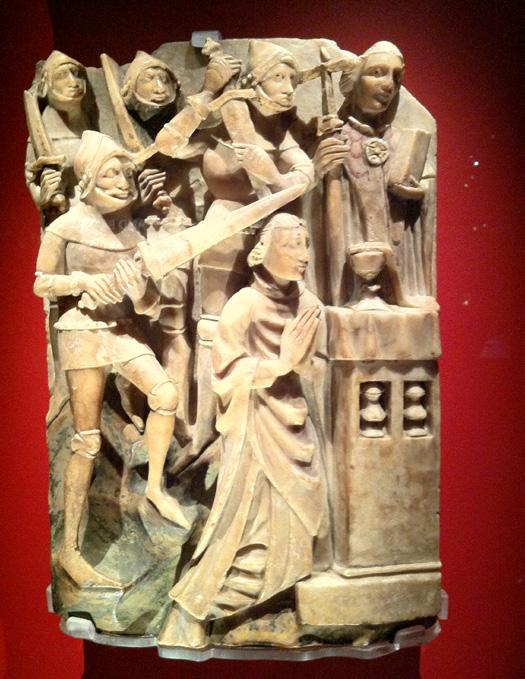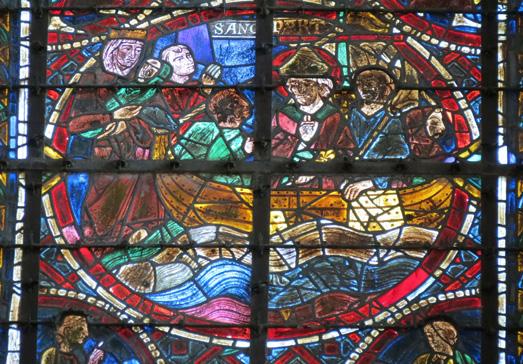
5 minute read
From the Editor
Fr John writes
Dear Parishioners, Friends and Readers of Oremus
Perhaps I fell into the trap of investing too much hope in the long-expected ‘freedom date’ of 21 June by giving you details in this summer edition of three exhibitions that you might wish to visit. Despite the continuing restrictions, announced just as I write this, I hope that might still be possible. At any rate, in anticipation of more visitors coming into the Cathedral and of worshippers who have shared in Mass via the live stream returning to physical participation in the building, I ordered an increase to 2,000 copies of Oremus. In spite of the further month of limitation, please repay my confidence by collecting your own copy and, as many of you do, pass it on to family, friends or neighbours. It is an important witness to our Cathedral community being alive and well, and hopeful in our faith whatever the circumstances.
Inside Oremus you will find mention of a book by Fr Ivano Millico, of Clerkenwell parish, in which he encourages us not to bemoan our situation, but to see with ‘eyes of faith’. In September I hope to reproduce a piece about how the Church has responded to a pandemic in the past, with the example of how St Charles Borromeo took the lead in Milan. Coincidentally, I was reading Professor Eamon Duffy’s book Fires of Faith, which looks at Catholic England in the reign of Queen Mary. He makes the point that, with the accession of Queen Elizabeth I, all but one of the bishops and very many of the senior churchmen left for mainland Europe, where they exercised a strong influence in a number of countries. Milan was home to a number of English refugee clergy, several of whom occupied the office of Vicar General to St Charles, a piece of history of which we can be proud.
Over these last editions you will have missed information from the Friends, whose outings and activities have been greatly curtailed during the pandemic. However, Christina White has been busy checking on locations for possible future visits. Another casualty has been the hitherto regular page from the children of SVP School. I can report that the children have been making good progress in resuming their schooling and the Governing Body has been particularly aware of and grateful to the staff for their hard work over the last year. To teach some children in school whilst providing work for other children to do at home has meant going above and beyond in their commitment and needs to be noted as another expression of how generous many people have been in different ways in the changed circumstances of our lives. The Cathedral thanks especially those who continue their financial support, so that God’s house can keep its doors wide open for all. With my best wishes
Westminster Cathedral
Cathedral Clergy House 42 Francis Street London SW1P 1QW Telephone 020 7798 9055 Email chreception@rcdow.org.uk www.westminstercathedral.org.uk
Cathedral Chaplains
Fr Sławomir Witon´ , Administrator Fr Michael Donaghy Fr Andrew Gallagher, Precentor Fr Hugh MacKenzie Fr Vincent Mbu’i SVD Fr John Scott, Registrar
Also in residence
Franciscan Sisters of Our Lady of Victories
Music Department
Simon Johnson, Master of Music (from 1 September 2021) Peter Stevens Obl. OSB, Assistant Master of Music James Orford, Organist in residence Marko Sever, Organ Scholar
Cathedral Manager
Peter McNulty
Estates Manager
Neil Fairbairn
Chapel of Ease
Sacred Heart Church Horseferry Road SW1P 2EF
Murder and the Making of a Saint
Valerie Hamblen
An English alabaster panel depicting the martyrdom of St Thomas
Thomas Becket: Murder and the Making of a Saint is, rather surprisingly, the first major exhibition about him at the British Museum. It was due to begin in October 2020 to mark the 850th anniversary of his murder, but Covid-19 intervened, so it has now begun in 2021. It runs until 22 August and is the story of the murder and its aftermath, but also concerns the long-running struggle between the power
of the Church and the power of the State.
Thomas was a man of great ability and served the king and the state well as Chancellor for many years, seemingly without much regard to the interests of the Church. The king appointed him as Chancellor, regarding him as an ally, although Thomas' early life was set against the backdrop of a turbulent royal succession crisis in which his patron, Theobald, Archbishop of Canterbury, played a significant role. Theobald's death in 1161 was the spur for a complete change to his life. The king wanted to appoint Thomas to the See of Canterbury, against the latter's will. The king persisted and Thomas was duly elected. He then resigned as Chancellor and was ordained priest before his consecration as Archbishop. A beautiful panel from an alabaster altarpiece records the consecration. A mitre, thought to have belonged to Thomas, is displayed at the exhibition; it was eventually given to Cardinal Wiseman, the future Archbishop of Westminster, in 1842 and is on loan to the British Museum.
After his consecration Thomas journeyed to Rome to receive his pallium from the Pope, pledging obedience to the papacy by an oath. This seems to have effected a complete change in his life, so that he became a devoted defender of the Church, frequently against the royal will. Images made at the time, in the Queen Mary Psalter, show the King and the Archbishop seemingly in dispute. One of the major issues was clerical immunity from secular prosecution, and on this there was no agreement between the Church, represented by Becket, and the king. The dispute eventually led to the instigation of Thomas’ murder, which had enormous international impact and repercussions at the time which still echo today. Henry II later made several penitential visits to what had become the martyr’s shrine, but seemingly never really freed himself from the guilt of the crime committed in his name.
Lack of technology was no impediment to word of the murder spreading quickly to the continent and pilgrims began to come to Canterbury in large numbers to pray at the shrine and to obtain relics. Henry's daughters were all married to European dukes and kings and it seems they, too, promoted devotion to the murdered Archbishop. Early images in wall paintings and metalwork items are often found in Spain, Italy and Germany, with other representations in place in churches and museums across Europe. The exhibition includes a beautiful enamelled 12th century reliquary casket from Limoges, which depicts the murder and the Archbishop's subsequent burial. One of the earliest recorded descriptions of the crime, dating from around 1180 and also on show, is a very well preserved illuminated manuscript which depicts the martyrdom in careful detail. Thomas’ burial in Canterbury Cathedral crypt was recorded in the Harley Psalter soon after

© Giogo
One of the Trinity Chapel windows depicts the Archbishop crossing the Channel









